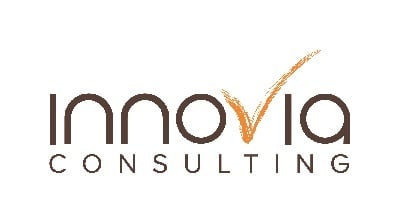Whether you follow the New York Times, The Wall Street Journal, or other leading news outlets, talk of a recession has many business leaders worried. The impact of a slowdown in our economy is always a concern for businesses. The key to riding out a recession or possibly even thriving during a downturn is preparation. As leaders in our companies, if we take steps now to prepare for an eventual downturn (because there is always a downturn), we can be prepared for the worst, and possibly even prosper.
So, what steps can you take to be prepared?
Here are several ideas that Innovia has helped our customers implement to protect their cash flow, improve their inventory positions, and keep their eyes focused on the future so that they can exploit opportunities that present themselves during a recession.
1. Make invoicing and collections a priority; NOW.
Do not wait for things to slow down and for cash to get tight to begin improving your discipline around invoicing and collections.
-
-
Take a look at your invoicing and collections process. Tip, this should be as automatic as possible. Most ERP systems, and certainly Microsoft Dynamics 365 Business Central, can help you automatically invoice for products or services. They can also provide you with interactive dashboards that track orders that can not be automatically invoiced so you can follow up and get the invoice to the customer as quickly as possible. The first step to getting paid faster is ensuring your customer has an invoice from which they can pay.
-
Watch your payment terms. It seems simple, but the number of companies that lose sight of this important administrative task is surprising. Paying a small fee to determine a customer or potential customer’s creditworthiness is worth the investment. Once you have established your comfort level regarding the customer’s ability to pay you, align your payment terms to reflect a reasonable expectation of when they should pay you. Again, your ERP system can help. Microsoft Dynamics 365 Business Central provides many options, including new features based on AI and Machine Learning, which will help forecast any anticipated slowdown in customers paying you on time.
-
Once you have the invoice in the customer’s hands, the next critical step is to get them to pay promptly. Beyond your payment terms, which many customers view as payment “suggestions,” you can also help make it easier for your customers to remit payments.
-
Provide them with a payment portal to see and submit their payment.
-
Establish electronic payment options, preferably ACH draft agreements, which enable you to draw your payment from the customer bank upon the due date.
-
Provide payment links on invoices and statements. Again, Microsoft Dynamics 365 Business Central makes doing this simple. Research by several payment processors finds that invoices and statements with this type of “pay now” reduce past-due accounts by nearly 25%.
-
-
Make the phone call and document the discussion. Calling people for money takes a certain personality. That said, if the preceding steps have not worked and a customer is past due, don’t delay, make the call today to find out what is going on with the payment. Ensure you can document the discussion in your system so that you, or whoever may assist in the collections process, can remember the last conversation and hold the customer accountable for whatever they promised to do.
-
2. Cut the problem customers loose.
As business owners, we work hard to win new customers, it is unnatural to send them away. However, sometimes we have to separate the good customers from the laggards. Innovia clients are often surprised to learn that a customer who they considered in the top 20% is, in fact, not nearly as profitable when viewed through the lens of dealing with complaints, unreasonable requests, slow payments, and other factors that diminish their value to their company.
-
-
Establish key performance indicators (KPIs) to help take the emotion out of the decision as to whether a customer is a winner or a loser. Most ERP systems support some type of customer rating system. Make sure you take the time to thoughtfully review this tool and leverage your data to help guide your decision.
-
How much trouble is the customer worth? We often find ourselves doing business with a firm that is simply more trouble than they are worth. This is not to say the customer does not spend money with us, in fact, they may spend a great deal of money with us, but at what cost?
-
-
Ask yourself the following questions.
-
How many complaints do we receive from this customer relative to our normal level of customer feedback? If you are not currently documenting customer issues in either your ERP or CRM systems, start doing this today.
-
Do they pay on time?
-
How much time does our sales or customer service team need to invest with them to keep the customer orders flowing?
-
How much cross-sell or upside potential exists with this customer?
-
-
3. Work with your vendors NOW.
The time to request a review of payment terms from your vendors is before everyone in the business community does the same. Ask for an account review and start the conversation. You can use strategies to help establish why your business deserves consideration from your vendor.
-
-
How long have you been a customer? Long-term relationships have value to our vendors.
-
What frequency do you have returns or other issues? If you are working with your vendor in good faith, your company likely treats them better than many of their other customers.
-
How many of the vendor’s products or services do you utilize? If you are a customer that purchases a wide range of products/services, you are more valuable to this vendor.
-
Do you pay your bills on time? If the answer is yes, this is one of the most compelling cases for improved payment terms.
-
Can you commit to a certain level of business with this vendor for 12 or 24 months? Long-term arrangements help vendors plan their business and save money, which can help make a case for better payment terms or price concessions.
-
4. Optimize your inventory.
It seems obvious that you don’t want excess inventory; however, many of our customers who have not yet leveraged their ERP to better forecast appropriate inventory levels are shocked to see the adjustments that can save their company money. No business can thrive in today’s economy without taking a more strategic view of its inventory levels and purchasing decisions. Here are several ways to help your company save money with your inventory.
-
-
Review the planning parameters in your ERP system. So many times, companies set up their planning parameters and treat them like it was “one and done.” We recommend making recurring reviews. As customers’ buying habits change, market preferences change, and your purchase and stocking decisions should respond to those changes. Failure to do this leads to your money being tied up in slow-moving or obsolete inventory.
-
Utilize a forecasting system. To be clear, this does not mean updating your Excel spreadsheet. If your company does not have a forecasting system based on mathematical algorithms to help inform purchasing decisions, you are not doing the proper job. There are many inexpensive forecasting tools that will more than pay for themselves by helping your purchasing team make appropriate buying decisions.
-
Work with your vendors. Many companies will provide your purchasing team with improved pricing by ordering in more efficient quantities or on a predictable schedule. By combining these vendor discussions with the data from your forecasting system, you can ensure your company is receiving the most favorable pricing from your trading partners.
-
5. Streamline your operations.
One exercise that is very helpful to our customers is taking time to Value Stream Map their current processes. This exercise helps identify processes that are no longer appropriate or less than optimal to best serve our customers. The lesson I received early on in conducting these sessions is to ask ourselves, “if the customer knew they were paying for this, would they ask us to stop?”. All the cash we receive comes from some activity with our customers. We need to optimize our processes and systems to ensure we operate as efficiently as possible.
-
- Value Stream Mapping. This typically takes anywhere from 3-12 weeks, depending on the number of departments and people involved. Regardless of the length of the process, Innovia strongly suggests that our clients undertake this process prior to any investment in their system. Software applied to a bad process only enables you to do the wrong thing faster.
- Tune your ERP system. When you initially installed your system, you likely had three reactions: 1. That was no fun. 2. This cost WAY more than we planned. 3. Let’s avoid this in the future! You must overcome these common feelings. Every company that uses technology as a strategic advantage does a periodic system review to ensure they are leveraging their system to be as efficient as possible.
- Look for ways automation can help us reduce the number of people it takes to do our job. While reducing our workforce is an uncomfortable topic for many leaders, it is crucial. Innovia never suggests a ruthless approach to our customers' teams. That said, if your business is generally growing, there are likely other higher-value jobs for these folks to perform rather than the task which has now been system automated. Employees typically rank either number 1 or 2 in terms of expense for most Innovia customers. If your business is getting itself in financial shape to weather a recession, we simply cannot afford to have people in positions that could and should be automated.
There is an old saying that “Economists have correctly forecasted 10 of the last 3 recessions”. While preparing our business for a potential downturn is critical to ensuring that we weather a potential storm, we don’t want to operate from a basis of fear. In the vast majority of cases, Innovia customers tell us that business is good. That is good news. So, take the steps above today to improve your bottom line now and help protect your business from the next downturn, whenever that may occur. Remember, ships are safe in the harbor, but ships were not made for the harbor. Let’s set sail to a more efficient and profitable business.
If you would like help streamlining your business
Contact one of our Customer Engagement Specialists.
We Can Help!





